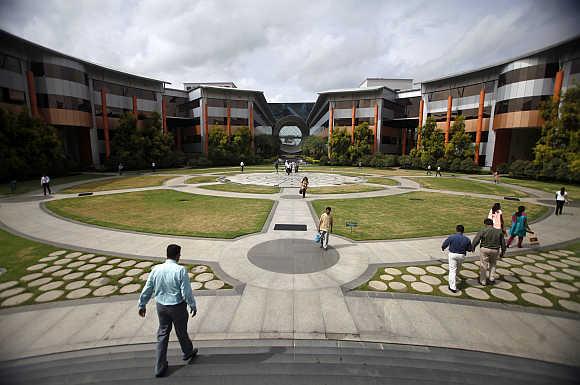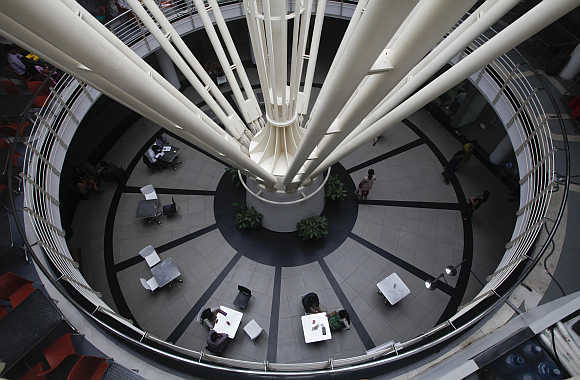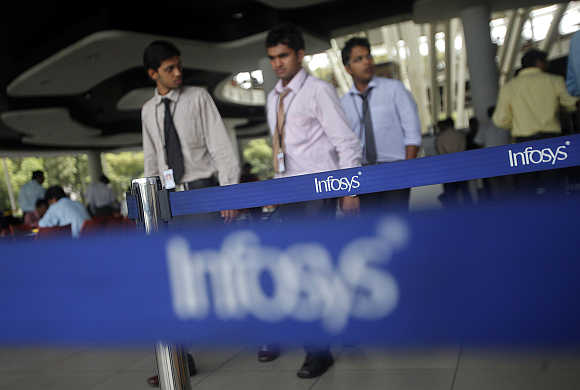 | « Back to article | Print this article |
What Infosys needs most is a culture change
The impact of Infosys' results for the fourth quarter of 2012-13 has been dramatic. While its shares dropped a massive 21.3 per cent on reporting day, the Sensex lost nearly 300 points, or 1.6 per cent.
The latter can be partly attributed to the overall sentiment that brought the index down by a higher figure in the previous week, but Infosys' woes are more of its own making.
In the past, it could take some comfort from the fact that the markets invariably got it wrong. The shares fell sharply on the announcement of results, but recovered most or all of the loss by the next reporting date. But within this fluctuation there has been a disappointing downward trend.
Click NEXT to read more...
What Infosys needs most is a culture change
The one-time investors' favourite has lost a third of its value since its January 2011 peak. In a precisely reverse scenario, over the same period market leader TCS has added a third to its share value. And going by the forecasts for the current financial year, Cognizant is likely to overtake Infosys to the number two position.
If the whole financial year, 2012-13, is considered - a particular quarter can be a blip - Infosys can claim it has done not too badly compared to its past performance in terms of both top line and margins. The top line grew by 19.6 per cent last year, which was not all that far behind the 22.7 per cent achieved in the previous year (2011-12) and 20.9 per cent achieved in the year before (2010-11).
Click NEXT to read more...
What Infosys needs most is a culture change
As for net margins, at 23.3 per cent in 2012-13, Infosys is likely to remain the most profitable large company in its sector. Why, then, is the market so enamoured of TCS?
A stock price is supposed to discount the future and it is here that the two firms differ widely. TCS is likely to reaffirm its unambiguously bullish outlook when it announces its results soon, in sharp contrast to the prevailing mood in Infosys, which sees a challenging scenario ahead.
What has beaten it down the most is its forecast of a 6-10 per cent top-line growth in the current year, when Nasscom has projected 12-14 per cent growth for the industry.
Click NEXT to read more...
What Infosys needs most is a culture change
Of course, Nasscom's credibility is poor. The industry grew by a bit over 10 per cent in 2012-13, when Nasscom had forecast 11-14 per cent. What, then, is afflicting Infosys? One is bad luck over timing. It sought to change its business model - moving away from the commodity end into higher value addition (all big players have to do this) just when the global economic scenario tanked.
The second is the succession issue. The last of the founders now heads the company, and it can be expected to show aggressive zeal only when the next leader takes over and puts in place his own team.
Click NEXT to read more...
What Infosys needs most is a culture change
Third, and perhaps most important, culturally Infosys remains much too conservative. Despite the acquisition of Lodestone, it is way behind TCS and Wipro in terms of non-organic growth.
It is too early for a 30-plus entity to behave like a dowager when it is TCS that can be called the grand dame of Indian software.





